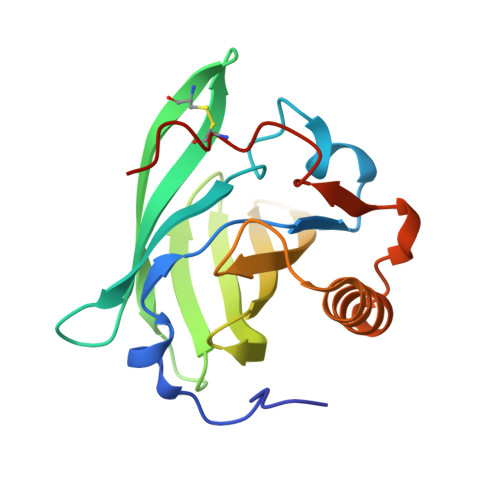Reverse chemical ecology: Olfactory proteins from the giant panda and their interactions with putative pheromones and bamboo volatiles.
Zhu, J., Arena, S., Spinelli, S., Liu, D., Zhang, G., Wei, R., Cambillau, C., Scaloni, A., Wang, G., Pelosi, P.(2017) Proc Natl Acad Sci U S A 114: E9802-E9810
- PubMed: 29078359
- DOI: https://doi.org/10.1073/pnas.1711437114
- Primary Citation of Related Structures:
5NGH - PubMed Abstract:
The giant panda Ailuropoda melanoleuca belongs to the family of Ursidae; however, it is not carnivorous, feeding almost exclusively on bamboo. Being equipped with a typical carnivorous digestive apparatus, the giant panda cannot get enough energy for an active life and spends most of its time digesting food or sleeping. Feeding and mating are both regulated by odors and pheromones; therefore, a better knowledge of olfaction at the molecular level can help in designing strategies for the conservation of this species. In this context, we have identified the odorant-binding protein (OBP) repertoire of the giant panda and mapped the protein expression in nasal mucus and saliva through proteomics. Four OBPs have been identified in nasal mucus, while the other two were not detected in the samples examined. In particular, AimelOBP3 is similar to a subset of OBPs reported as pheromone carriers in the urine of rodents, saliva of the boar, and seminal fluid of the rabbit. We expressed this protein, mapped its binding specificity, and determined its crystal structure. Structural data guided the design and preparation of three protein mutants bearing single-amino acid replacements in the ligand-binding pocket, for which the corresponding binding affinity spectra were measured. We also expressed AimelOBP5, which is markedly different from AimelOBP3 and complementary in its binding spectrum. By comparing our binding data with the structures of bamboo volatiles and those of typical mammalian pheromones, we formulate hypotheses on which may be the most relevant semiochemicals for the giant panda.
Organizational Affiliation:
State Key Laboratory for Biology of Plant Diseases and Insect Pests, Institute of Plant Protection, Chinese Academy of Agricultural Sciences, Beijing 100193, China.















